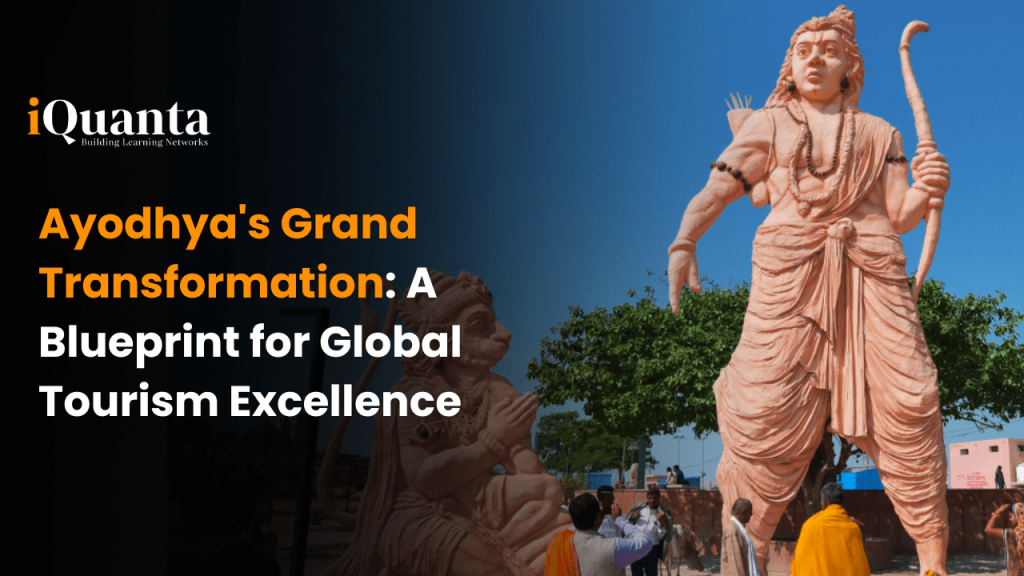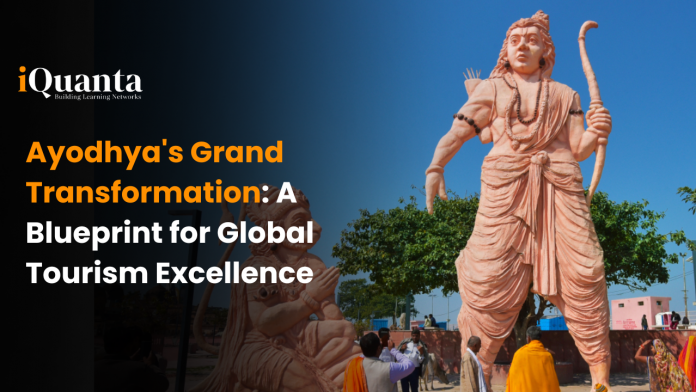
Genre : Tourism
Over the next few years, Ayodhya, a holy city with great historical value, is expected to undergo a massive transformation into a major worldwide tourism destination, with over three lakh visitors per day. This is a truly ambitious approach. Dikshu Kukreja, the project’s master planner, is leading this massive reconstruction. He finds inspiration in well-known worldwide models such as Vatican City, Cambodia, Jerusalem, Tirupati, and Amritsar. The project intends to reduce traffic, make effective use of the land, and protect Ayodhya’s unique cultural legacy.

Methodical Scheduling Enlightened by Worldwide Insights
The careful planning that has gone into transforming Ayodhya into a popular tourist attraction is the result of a thorough analysis of comparable cases across the globe. Kukreja highlights the need of striking a balance between the development of contemporary infrastructure and the maintenance of historical and cultural identity. Drawing on the experiences of locations such as Vatican City, Cambodia, Jerusalem, Tirupati, and Amritsar, the plan aims to guarantee effective land use and establish an atmosphere that improves the general standard of living for both locals and tourists.
Ayodhya’s transformation into a major hub for tourism, business, and religious activities is predicted to bring in over three lakh pilgrims per day in the next three to four years. Ayodhya aims to become a worldwide tourism destination, offering substantial prospects for the hospitality and related industries, with a concentration on spiritual, cultural, and heritage values.
The Ambitious Master Plan
The master plan for the redevelopment of Ayodhya calls for an investment exceeding Rs 85,000 crore and calls for completion over ten years. Strategic connectedness is emphasized in the first phase, which is scheduled to begin on January 22 with the Ram temple’s dedication ceremony. The project aims to create an immersive cultural experience by creating grand entry points called “Ram dwarfs,” traditional stone facades, homestays, dharamshalas, and the creation of the Ramayana Spiritual Forest.
Preserving Cultural and Religious history
Kukreja emphasizes how crucial it is to keep Ayodhya’s religious and cultural history intact during the reconstruction. The project’s architecture, which took inspiration from Dravidian temple architecture, echoes the magnificence of Ayodhya. Promoting Ayodhya’s distinct identity while fostering economic prosperity and social well-being requires striking a balance between tourism facilitation and environmental conservation and cultural preservation.
Lessons from Indian and International Paradigms
The master planner and his group conducted a thorough analysis of the infrastructure and urban design of temple towns in India and around the world. By using Tirupati, Amritsar, Vatican City, Jerusalem, Cambodia, and other cities as models, best practices that were adapted to the unique circumstances of Ayodhya may be implemented. The Ayodhya redevelopment project is evidence of how flexible and well-integrated Indian and international planning paradigms can be.
Connectivity as a Catalyst
The project gave priority to effective transportation infrastructure because it recognized the critical role that connectivity played in converting Ayodhya into a popular tourist destination worldwide. The recently renovated train station and airport serve as further evidence of the dedication to smooth accessibility for guests. The main goals are to use parking zones, discourage private vehicle admission into the city, and establish a network of net-zero electric vehicles for intra-city mobility.
Planning for Ayodhya’s Future in a Sustainable Way
In addition to drawing tourists, the reconstruction project aims to balance tourism with the lifestyles of Ayodhya’s long-term residents through sustainable planning. Through the establishment of a peaceful environment that prevents tourists from upsetting locals, the project hopes to advance social progress, economic development, and environmental preservation.
In conclusion, Ayodhya needs a paradigm shift.
Ayodhya’s rise to prominence as a worldwide tourism destination is a paradigm shift that combines an awareness of the world with a dedication to maintaining the city’s distinctive cultural and religious legacy. The master plan aims to revitalize Ayodhya’s character while promoting sustainability and economic progress, drawing inspiration from international models. The world is eagerly awaiting Ayodhya’s big voyage because it knows that the city has the potential to become a model for sustainable, culturally aware, and all-encompassing urban development.

